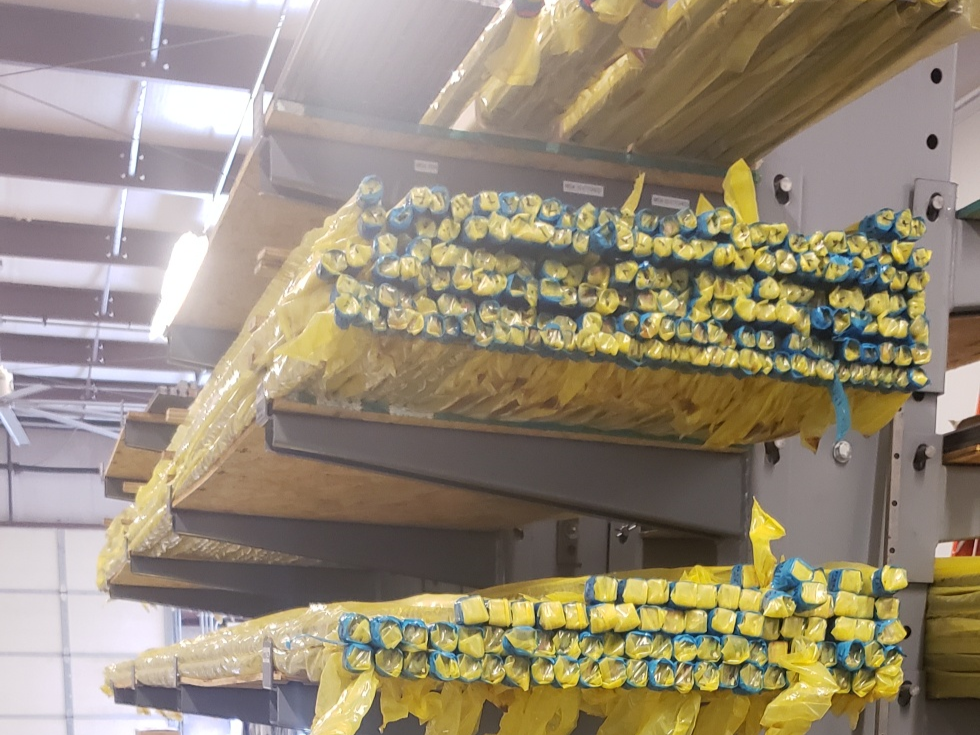Linear Guides Provide High Speed and Accuracy in Automation
Automated manufacturing systems, such as robots, material handling equipment and CNC machines, demand high-speed linear motion that is accurate and repeatable. Linear guides are being selected with more frequency in these applications as these devices are designed to provide precise and reliable motion in high-speed industrial equipment that demands rugged and robust straight-line motion control components.

Why Choose a Linear Guide?
Linear guide rails are available in different types and configurations and each has different characteristics, as follows:
Recirculating ball linear guides: This type of linear guide contains carriages with recirculating ball bearings that run on guideways for applications that require significant distances, allowing for unlimited travel. They have very low frictional resistance while maintaining high static and dynamic loads. They are suitable for applications that require high-load capacities, including automated manufacturing systems and material handling equipment.
Ball chain linear guides: A ball-and-track and ball chain system ensure that the balls don’t make contact with each other to provide low friction with little noise while still allowing precise, high-speed linear motion in automated manufacturing systems.
Roller type linear guides: These components include roller bearings that run along the length of the rail. Roller bearings are suitable for applications that require heavy loads, high levels of accuracy and high rigidity. Full roller models offer low-friction coefficients for smooth motion, even under ultra heavy industrial loads. Because of increased contact roller bearings have much lower elastic deformation under similar loads on ball bearings with point contact.
As linear guide rail systems are designed to provide straight, smooth, low-friction, high speed and highly accurate motion, they provide many advantages when selected for use in robots and other automated manufacturing equipment, including:
- An accurate and repeatable straight-line motion profile
- Rigid and robust construction that stands up to high speeds
- High-loading capabilities that support the load along the length of travel, making them suitable for larger automated manufacturing system applications
- Sturdy construction and high strength for guiding heavy industrial loads.
Linear Guides Rise to Automation Challenges
Linear guides were often overlooked in the past because they were more expensive than other available linear motion devices. However, providers of linear rail guides, such as AccuTech USA, are stepping up their game and enhancing these devices to make the investment in a linear guide worthwhile.
Innovative materials, designs and lubrication systems are allowing linear guides to offer straight-line motion with even greater levels of accuracy and precision and lower levels of friction to provide higher-than-ever speeds while still maintaining the smooth motion profiles for which they are known. In addition, designs such as ball bearing and roller guide systems help support higher load capacities and provide greater strength.
And, as efficiency in automation continues to be a major demand, linear guide rails are a good choice as low friction is inherent to the design. As they are designed to roll loads across the guide rails, linear guide rail systems require less work to drive the system to move the load, making them a very efficient choice for high-speed industrial automation systems.
Automation Trends Demand Linear Guides
While linear motion has always been a requirement for industrial motion control applications, several recent automation trends are behind the increasing use of linear guide rail systems. For example:
Increasing use of robots and automated manufacturing systems: As manufacturers continue to add automation in an effort to boost efficiency in operations, more robots and automation are being installed in factories. Linear guides provide the high speed and accuracy needed in these industrial workhorses.
Rise of 3D printing in industry: As more manufacturers strive to get products to market faster, the use of 3D printers for prototyping and product development continues to grow. Additionally, some manufacturers are turning to 3D printing to provide customized products. Linear rail guides provide smooth, high-speed, high-accuracy straight-line motion in 3D printers, allowing perfectly accurate models and ensuring faster production.
The need for longer life/lower maintenance equipment: The manufacturing industry is all about uptime, so the longer the lifecycle of equipment and the less maintenance required, the better. Linear guides are robust and rugged, which enhances equipment longevity. Additionally, they are designed for minimal maintenance as lubrication can be achieved easily by supplying grease through a grease nipple on carriage or using a centralized oil pumping system, decreasing frictional resistance and maintaining accuracy for long periods between lubrication.
Demand for higher speed equipment: Again, as manufacturers strive to increase throughput, fast-moving equipment is a necessity. Due to the characteristic of low frictional resistance, the required driving force of linear guides is much lower than other linear systems.
Increasing quality through automation: In addition to increasing efficiency, manufacturers also seek to improve quality and the accuracy of robots and automated equipment helps achieve higher quality products as it eliminates deviations and errors commonly associated with manual labor. Linear guide rail systems offer rolling motion with a low friction coefficient, so the difference between dynamic and static friction is very small, increasing precision. Using linear guides for motion control in robots and automated equipment permits greater positioning accuracy and high repeatability, contributing to higher quality production and reducing waste associated with out-of-spec products.
Any automated manufacturing system that demands high-speed, high-accuracy and rugged motion control components should consider the use of a linear guide, as these devices provide several advantages in robotics and other automated industrial machinery. To ensure the highest quality components, it is crucial to obtain linear guide rail systems from a trusted manufacturer, such as AccuTech USA. For more assistance selecting a linear guide for your next high-speed automation project, please reach out to JHFOSTER today.
